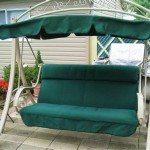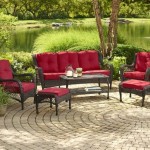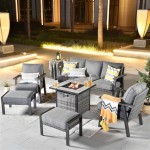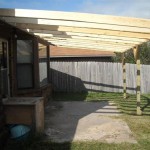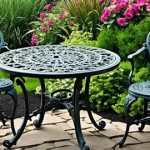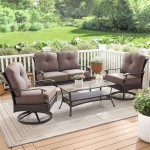Outdoor Patio Sunscreens: Shielding Your Space from the Sun
Outdoor living spaces have become increasingly popular, offering areas for relaxation, entertainment, and connection with nature. However, prolonged exposure to the sun's harmful ultraviolet (UV) rays can pose significant risks to human health and can also damage outdoor furniture and décor. Investing in effective outdoor patio sunscreens is a crucial step in creating a comfortable, safe, and enjoyable outdoor environment. These sunscreens come in various forms, each designed to address specific needs and aesthetic preferences. Understanding the different types of sunscreens, their benefits, and considerations for selection and maintenance is essential for maximizing their protective capabilities.
The primary function of outdoor patio sunscreens is to mitigate the negative impacts of solar radiation. Excessive sun exposure can lead to sunburn, premature aging, and an increased risk of skin cancer. UV radiation can also fade and degrade outdoor furniture fabrics, wood finishes, and plastic components, resulting in costly replacements. By blocking or filtering sunlight, patio sunscreens create a more comfortable and protected space, allowing users to fully enjoy their outdoor areas without the detrimental effects of direct sun exposure.
Types of Outdoor Patio Sunscreens
The market offers a diverse range of outdoor patio sunscreens, each with distinct characteristics and functionalities. Selecting the appropriate type of sunscreen requires careful consideration of the patio’s orientation, the desired level of shade, aesthetic preferences, and budget constraints.
Awnings:
Awnings are retractable or fixed coverings that extend from a building's exterior wall, providing shade over a patio or deck. Retractable awnings offer flexibility, allowing users to adjust the amount of shade depending on the weather conditions. These awnings are typically made of durable fabrics like acrylic or polyester, which are treated to resist fading, water damage, and mildew. Fixed awnings, on the other hand, provide permanent shade and are often constructed from more rigid materials like metal or composite panels. Awnings can significantly reduce solar heat gain, helping to keep the patio area cooler and more comfortable during hot summer months.Shade Sails:
Shade sails are fabric canopies suspended between multiple anchor points, creating a visually appealing and functional shade structure. These sails are typically made from high-density polyethylene (HDPE) mesh, which allows air to circulate while blocking a significant percentage of UV rays. Shade sails offer a modern and stylish aesthetic and can be customized in various shapes, sizes, and colors to complement the outdoor space. The installation of shade sails requires careful planning to ensure proper tension and stability, and professional installation is often recommended.Patio Umbrellas:
Patio umbrellas provide portable and adjustable shade for outdoor seating areas. These umbrellas come in various sizes and styles, including cantilever umbrellas that suspend the canopy from a side pole, allowing for unobstructed shade. Patio umbrellas are typically made from weather-resistant fabrics like olefin or solution-dyed acrylic, and the frames are often constructed from aluminum or steel for durability. While patio umbrellas offer flexibility and ease of use, they may not provide as much coverage as awnings or shade sails and can be susceptible to wind damage.Pergolas with Shade Covers:
Pergolas are open-roofed structures that can be enhanced with shade covers to provide protection from the sun. Shade covers for pergolas can include retractable canopies, fabric panels, or even climbing plants. Retractable canopies offer adjustable shade, allowing users to control the amount of sunlight entering the patio area. Fabric panels can be easily attached and detached, providing seasonal shade as needed. Climbing plants, such as wisteria or grapevines, can create a natural and aesthetically pleasing shade cover, but they require regular maintenance and may not provide complete sun protection.Outdoor Curtains:
Outdoor curtains, made from weather-resistant fabrics, can be hung around a patio or pergola to provide shade and privacy. These curtains can be easily drawn open or closed, allowing users to control the amount of sunlight and airflow. Outdoor curtains are available in a wide range of colors, patterns, and textures, adding a decorative element to the outdoor space. They can also help to block wind and insects, creating a more comfortable and enclosed environment.Factors to Consider When Selecting Outdoor Patio Sunscreens
Choosing the right outdoor patio sunscreen involves evaluating several key factors to ensure the selected option meets the specific needs and preferences of the user. These factors include the level of sun protection, the material's durability, aesthetic considerations, ease of installation and maintenance, and budget constraints.
Level of Sun Protection:
The primary purpose of a patio sunscreen is to provide protection from harmful UV rays. Sunscreens are typically rated based on their Ultraviolet Protection Factor (UPF), which indicates the amount of UV radiation that can penetrate the fabric. A higher UPF rating indicates greater protection. When selecting a sunscreen, it is essential to choose a product with a UPF rating of 30 or higher to provide adequate protection from the sun's harmful effects. Consider the time of day the patio is used most frequently and the angle of the sun to determine the optimal level of coverage needed.Material Durability:
Outdoor patio sunscreens are exposed to various weather conditions, including sun, rain, wind, and temperature fluctuations. Therefore, it is crucial to select sunscreens made from durable and weather-resistant materials. Acrylic and polyester fabrics are commonly used for awnings and shade sails due to their resistance to fading, water damage, and mildew. Aluminum and steel frames are durable and can withstand strong winds and heavy rain. When selecting materials, consider the local climate and choose options that are specifically designed for outdoor use.Aesthetic Considerations:
Patio sunscreens should complement the overall aesthetic of the outdoor space. Awnings and shade sails are available in a wide range of colors, patterns, and styles, allowing users to customize the look of their patio. Consider the architectural style of the house and the existing outdoor furniture when selecting a sunscreen. Neutral colors and simple designs can blend seamlessly with any décor, while bold colors and patterns can add a pop of visual interest. Choosing a sunscreen that enhances the overall aesthetic appeal of the outdoor space can create a more inviting and enjoyable environment.Ease of Installation and Maintenance:
The installation and maintenance requirements of patio sunscreens can vary significantly depending on the type of product. Retractable awnings and shade sails typically require professional installation to ensure proper tension and stability. Patio umbrellas and outdoor curtains are relatively easy to install and can be set up by the homeowner. Regular cleaning and maintenance are essential to prolong the life of the sunscreen. Fabric awnings and shade sails should be cleaned periodically with mild soap and water to remove dirt and debris. Metal frames should be inspected for rust and corrosion and treated accordingly. Choosing a sunscreen that is easy to install and maintain can save time and money in the long run.Budget Constraints:
The cost of outdoor patio sunscreens can vary widely depending on the type of product, size, materials, and installation requirements. Retractable awnings and custom shade sails are typically more expensive than patio umbrellas and outdoor curtains. Before making a purchase, it is essential to establish a budget and research different options within that price range. Consider the long-term value of the sunscreen and choose a product that offers the best combination of quality, durability, and affordability.Benefits of Using Outdoor Patio Sunscreens
Investing in outdoor patio sunscreens offers numerous benefits beyond simply providing shade. These benefits include improved comfort, protection from UV radiation, increased energy efficiency, enhanced privacy, and extended lifespan of outdoor furniture.
Improved Comfort:
Patio sunscreens create a more comfortable outdoor environment by reducing the amount of direct sunlight and heat. This allows users to enjoy their patios and decks even during hot summer months. By blocking or filtering sunlight, sunscreens can lower the temperature of the outdoor space, making it more pleasant for relaxation, dining, and entertaining. A comfortable outdoor environment encourages users to spend more time outdoors, promoting physical activity and social interaction.Protection from UV Radiation:
As previously discussed, patio sunscreens provide essential protection from harmful UV rays. Prolonged exposure to UV radiation can lead to sunburn, premature aging, and an increased risk of skin cancer. By blocking or filtering sunlight, sunscreens significantly reduce the amount of UV radiation reaching the skin, minimizing these risks. Protecting oneself and one's family from UV radiation is a crucial aspect of maintaining overall health and well-being.Increased Energy Efficiency:
Awnings and other types of patio sunscreens can help to reduce energy consumption by minimizing solar heat gain. When sunlight enters a building through windows and doors, it can increase the temperature of the interior spaces, requiring the use of air conditioning to maintain a comfortable temperature. By blocking sunlight from entering the building, sunscreens can reduce the need for air conditioning, resulting in lower energy bills and a reduced carbon footprint. This is especially beneficial for patios that are adjacent to rooms with large windows or glass doors.Enhanced Privacy:
Outdoor curtains and screens can provide enhanced privacy for patio users. These screens can block the view from neighboring properties or passersby, creating a more secluded and intimate outdoor space. Privacy screens are particularly useful for patios that are located in urban areas or close to busy streets. By creating a sense of privacy, sunscreens can enhance the overall enjoyment and relaxation of the outdoor space.Extended Lifespan of Outdoor Furniture:
UV radiation can cause significant damage to outdoor furniture, leading to fading, cracking, and deterioration of materials. By blocking or filtering sunlight, patio sunscreens can help to protect outdoor furniture from the damaging effects of UV radiation, extending its lifespan. This can save money in the long run by reducing the need to replace furniture frequently. Sunscreens also help to protect outdoor rugs, cushions, and other accessories from fading and discoloration, maintaining their appearance and value.
Outdoor Shades Window The Home Depot

Retractable Exterior Solar Screen Nationwide Sunair Awnings

Retractable Exterior Solar Screen Nationwide Sunair Awnings

Large Heavy Duty Outdoor Solar Shades North Screen

Retractable Exterior Solar Screen Nationwide Sunair Awnings

Large Heavy Duty Outdoor Solar Shades North Screen

Solar Screens In Tucson Az Trss

90 Shade Fabric Sun Cloth Privacy Screen With Reinforced Grommets For Outdoor Patio Garden Pergola Cover Canopy Com

Indoor Outdoor Drop Rolls Sunscreens Riverside San Bernardino Orange County Ca Patios Windows

Roller Shades Coolaroo
Related Posts

